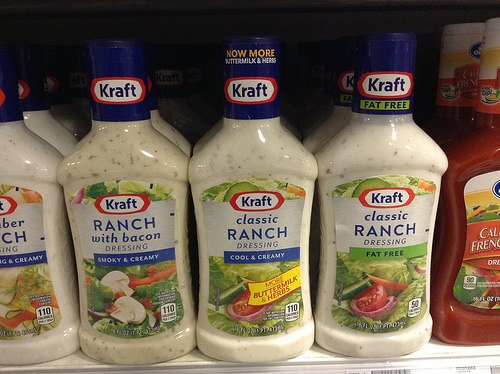Almost everyone has a collection of salad dressings scattered around their refrigerator. You don’t necessary want to eat Ranch, or Italian dressing every night of the week, after all. Of course, there always comes that time when you start to wonder if those bottles of dressing are still good. So, does salad dressing go bad?
Does salad dressing go bad?
Salad dressing does indeed go bad, though different types of salad dressings have different shelf lives. If unopened, creamy dressings (like Ranch or Thousand Island) are safe to consume for about two months past the printed expiration date. Unopened vinegar and oil dressings, like balsamic vinaigrette, will stay fresh for up to four months past the written expiration date. For the most part, this will give the unopened bottle of dressing a shelf life of one or two years, if kept in a cool dark place, like your pantry or cellar.
Once a bottle of salad dressing is opened, the shelf life diminishes rapidly. Creamy dressings can be kept for up to four months in the refrigerator, and oil and vinegar based dressings should be consumed within six months. While oil and vinegar based dressings may still be safe to consume past the six month time period, the quality and taste will be significantly reduced. Storing oil and vinegar based dressings like Italian in the refrigerator is not completely necessary, but will certainly help to extend the shelf life.
Image used under Creative Commons from Mike Mozart
Signs of Spoilage
The most noticeable sign of spoilage will likely be odor. As soon as your salad dressing begins to smell off, it should be discarded. Separation of creamy salad dressings is also an indicator that the dressing is beginning to spoil, as is any sign of mold growth. Signs of mold growth indicate that the dressing has gone bad, and should not be consumed.
Vinegar, herbs and spices stay fresh for far longer than oil, and so oil and vinegar based salad dressings typically go bad because the oil has gone rancid. To check Italian dressing or vinaigrettes for spoilage, smell the dressing to see if the oil is rancid. Rancid oil is not hazardous in the way that mold or bacteria is, but should still be avoided. Unlike separation of creamy dressings, separation of oil and vinegar based dressings is natural, and does not indicate that the dressing has gone bad. Simply shake the bottle to mix the dressing back together.
If your bottle of salad dressing appears to be bloated, or if the lid makes a popping sound when opened, then gas has built up in the bottle, and the dressing should be immediately discarded. This tends to occur with fresh dressings that are found in the refrigerated section of the grocery store, though it can certainly happen with any creamy dressing. For safety reasons, you should never consume dressings in bloated bottles.
Storing Salad Dressing Long Term
Freezing salad dressing is not recommended, as it will not really extend the shelf life of the dressing. Freezing oil based dressings will cause the oil to go rancid within a week of thawing. If you accidentally freeze a bottle of dressing, it should be thawed overnight in the refrigerator, and used within the week.
Similarly, freezing creamy salad dressings will not really extend their shelf life, and will change the texture upon thawing. Creamy salad dressings that have been frozen are likely to separate, and will spoil quickly upon thawing.
While freezing the dressing alone is not recommended, meat, fish, or even tofu marinated in a vinegar dressing can be frozen with great success for cooking at a later point.
The post Does Salad Dressing Go Bad? appeared first on Does It Go Bad?.
